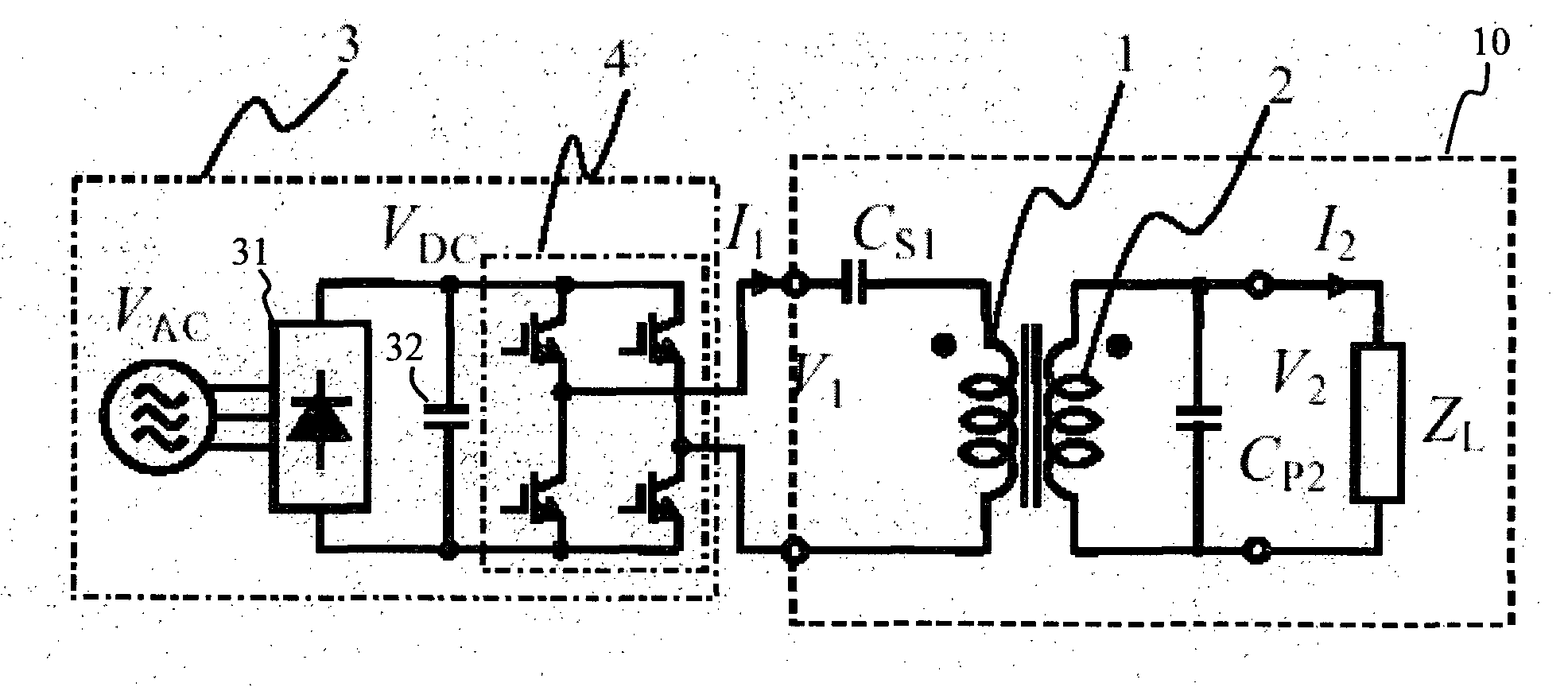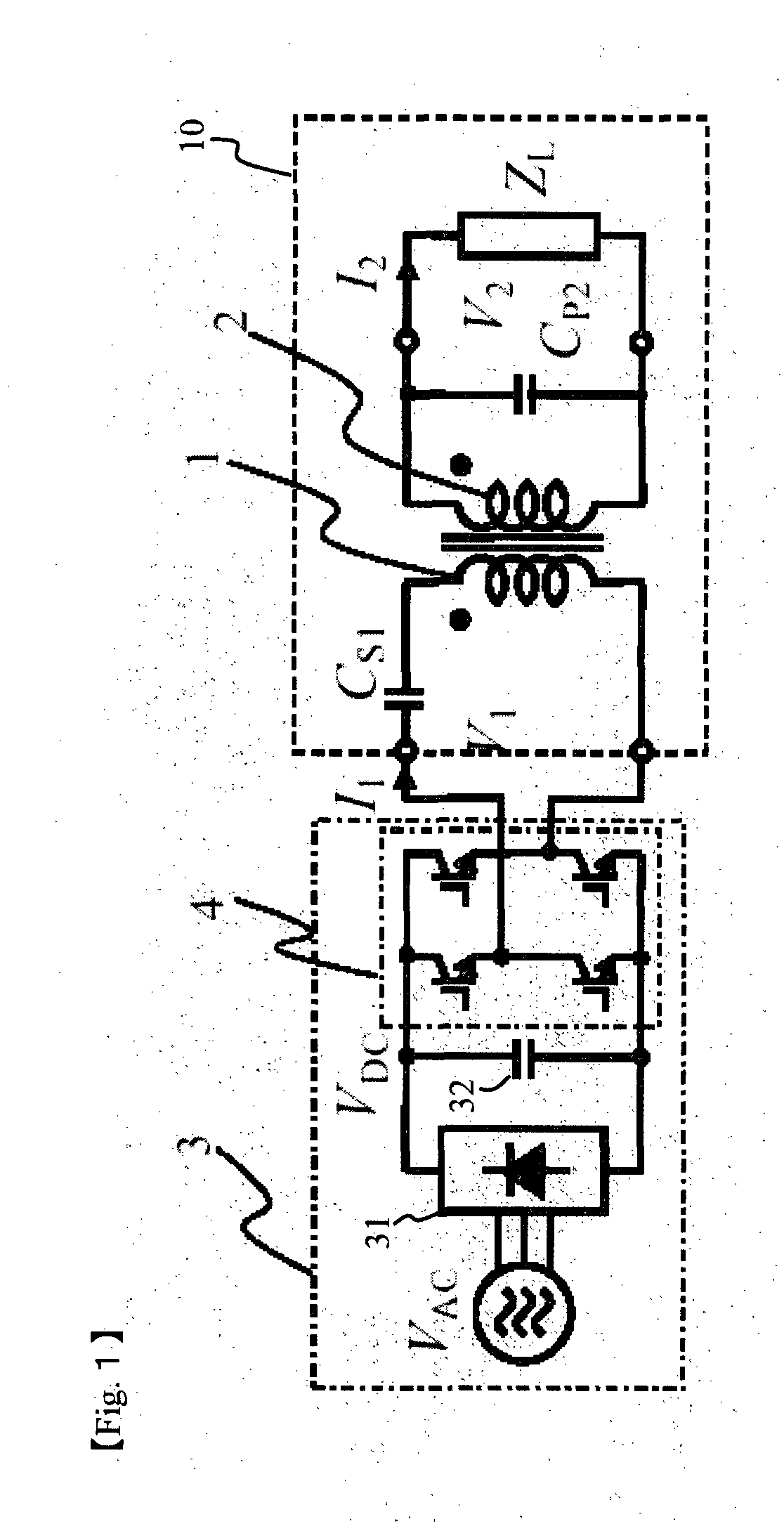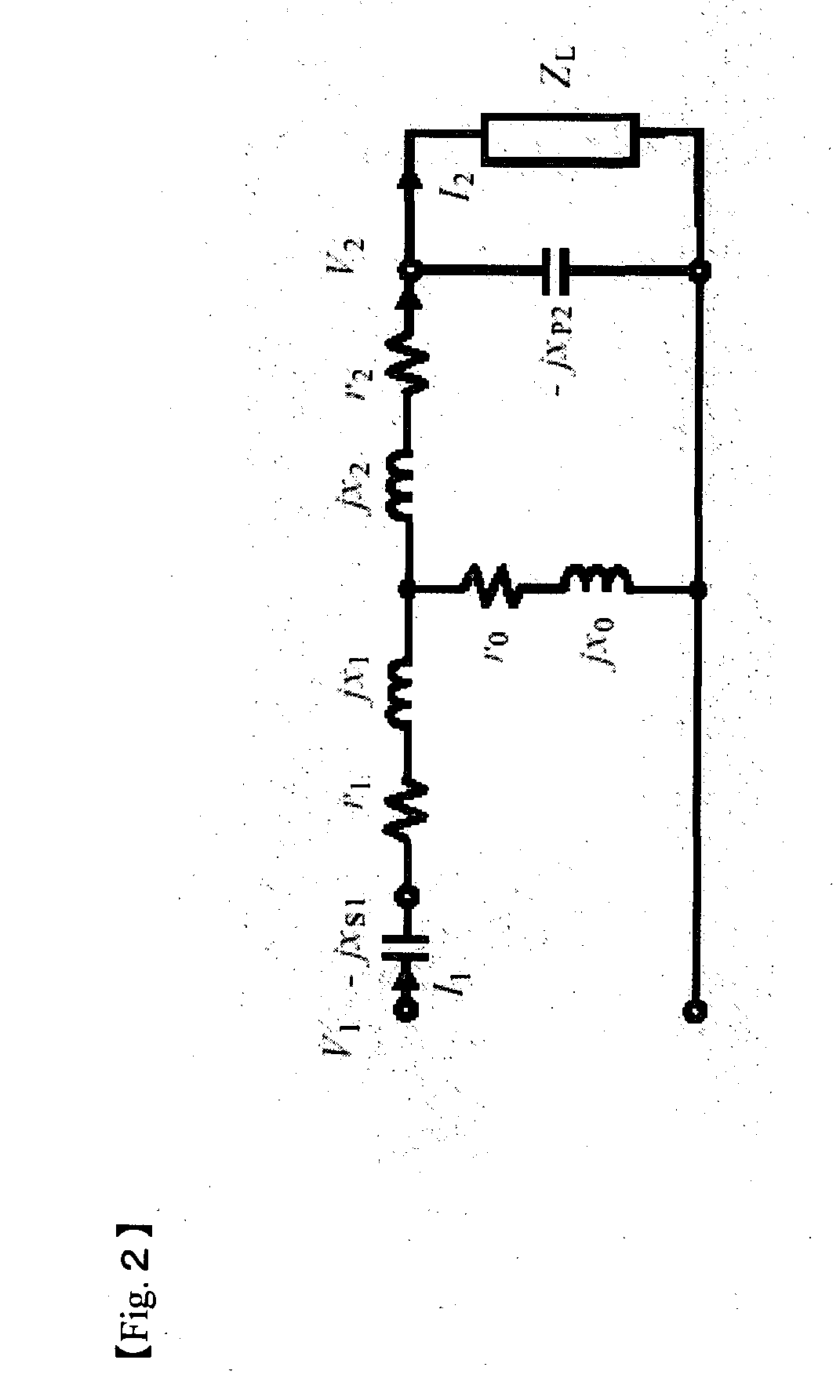Non-contact power feeder
- Summary
- Abstract
- Description
- Claims
- Application Information
AI Technical Summary
Benefits of technology
Problems solved by technology
Method used
Image
Examples
first embodiment
[0146]FIG. 1 illustrates a circuit configuration of the non-contact power feeder in a first embodiment of the present invention.
[0147]This power feeder comprises a high frequency AC power supply 3 and a non-contact power feeder portion 10 for supplying electric power outputted from the high frequency power supply 3 in a non-contact manner. The high frequency AC power supply 3 comprises a three-phase AC power supply VAC a rectifier 31 for rectifying the three-phase AC, a smoothing capacitor 32 and a voltage type inverter 4 for generating high frequency voltage using the rectified current and supplies AC in the range of several Hz to 100 kHz to the non-contact power feeder portion 10. Moreover, the non-contact power feeder portion 10 comprises a primary winding 1 and a secondary winding 2 of a transformer, a primary side capacitor Cs1 connected in series with the primary winding 1, a secondary side capacitor Cp2 connected in parallel with the secondary winding 2 and a load ZL to which...
second embodiment
[0173]In a second embodiment of the present invention, a description will be made on a non-contact power feeder in which the capacitors in the primary and secondary sides in the first embodiment are interchanged.
[0174]FIG. 7 shows a circuit configuration of this power feeder. The power feeder comprises a high frequency AC power supply 3 and a sine wave output inverter 9 as high frequency voltage generation means of the high frequency AC power supply 3. A non-contact power feeder section 10 comprises a primary side capacitor Cp1 connected in parallel with the primary winding 1 and a secondary side capacitor Cs2 connected in series with the secondary winding 2. The other configuration remains the same as the first embodiment (FIG. 1).
[0175]FIG. 8 is an equivalent circuit of the non-contact power feeder section 10 excluding the winding resistances r1, r2 and the iron loss r0. FIG. 9 illustrates (a) the basic configuration and (b) the equivalent circuit in this embodiment in a form conv...
third embodiment
[0192]Now, described is a third embodiment of the non-contact power feeder according to the present invention in which an inductor La is added to the secondary side in the first embodiment in order to vary the secondary voltage V2.
[0193]FIG. 11 illustrates the circuit configuration of this power feeder. An inductor La is added to the secondary side in this power feeder. Other configuration is the same as the first embodiment (FIG. 1).
[0194]Assuming that the reactance of the inductor La converted to the primary side is xa, it is given by the following (Expression 29):
xa=ω0×La (Expression 29)
[0195]The equivalent circuit of the non-contact power feeder section 10 is the same as the equivalent circuits in FIG. 2-FIG. 4 except that the secondary leakage reactance x2 converted to the primary side is increased by xa, i.e., (x2+xa). Accordingly, the value of Cp2 is determined by the following (Expression 30) that is equal to the (Expression 16) for the first embodiment except replacing x2 ...
PUM
 Login to View More
Login to View More Abstract
Description
Claims
Application Information
 Login to View More
Login to View More - R&D
- Intellectual Property
- Life Sciences
- Materials
- Tech Scout
- Unparalleled Data Quality
- Higher Quality Content
- 60% Fewer Hallucinations
Browse by: Latest US Patents, China's latest patents, Technical Efficacy Thesaurus, Application Domain, Technology Topic, Popular Technical Reports.
© 2025 PatSnap. All rights reserved.Legal|Privacy policy|Modern Slavery Act Transparency Statement|Sitemap|About US| Contact US: help@patsnap.com



